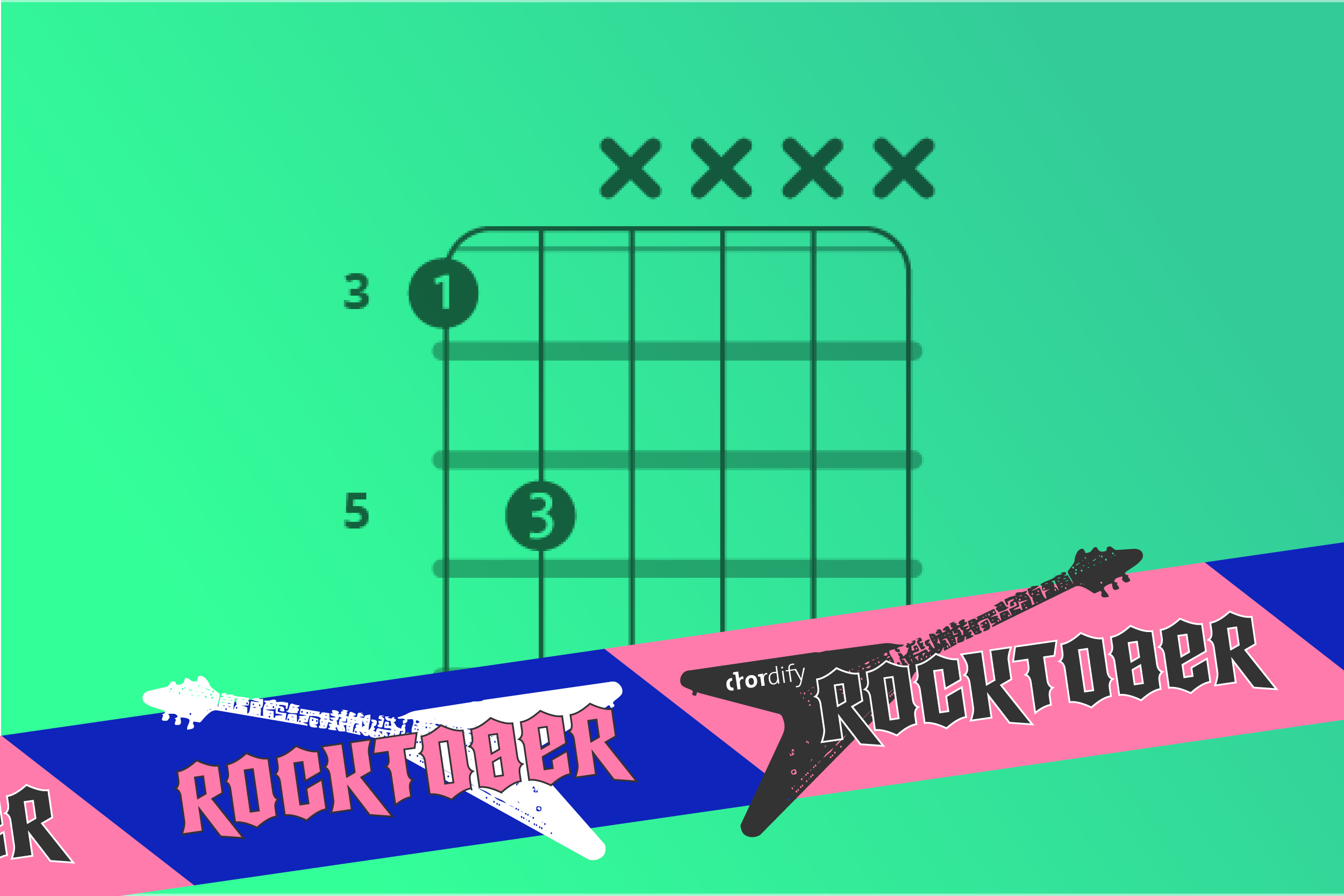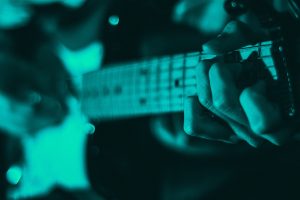In the words of Freddy Mercury: “Hey, are you ready for this? Are you hanging on the edge of your seat?” It’s Rocktober, and we’re celebrating a technique that makes a lot of rocking possible: the power chord.

Fun fact: A power chord isn’t actually a chord, but a harmony. Why? Because it’s a combination of the root and the fifth interval, so it has two notes. For it to be a chord, it has to contain at least three notes, in which the root and the third are the most important. The third is important because it determines whether a chord is a major or minor, but in a power chord we don’t play the third, so it’s neither. Leaving out the third is where the power chord gets its strength from, and that’s why, when in doubt, you can always play it. Let’s look at a few examples.
Link Wray
We’ll start off on a historical note, with Link Wray, who is commonly seen as the creator of the power chord. He introduced this simple approach to playing in the song “Rumble”. Little did he know the four chords of this light-hearted rock song would bring about a paradigm shift in guitar music. Let’s try it out.
How do I play a power chord?
The observant Chordify musician has probably already noticed that Chordify doesn’t show power chords. But you can easily figure this out yourself young padawan. Of course, we’ll help you. Pick up your guitar and let’s look at a G power chord for example. Its root is on the third fret of the lower E string. This is where you place your index finger. The next step is finding the fifth interval that creates the harmony with the root. In the G scale, the fifth is a D. You can find this at the fifth position on the A string. Depending on the size of your hands, you can choose to press it with your pinky or your ring finger. Does it sound good? Ow, yes it does! Now that you know about the finger placement of the G chord, you can slide this shape up and down the neck to create other power chords. One fret closer to the top for instance, and you’re playing an F#.
Inverted power chord
Sometimes musicians invert the power chord, which theoretically means you’re moving the root up an octave. On the E, A, and D string you can find the octave at the same fret as the fifth, only one string higher. Between the G and B string, the difference is a semitone, so keep that in mind. Let’s invert our example G power chord. We have to move our root G up an octave, which means you grab the A string in the fifth position (D note), and the D string fifth position (G note). Now you have an inverted G power chord. You can find the inverted power chord in one of the most famous riffs in rock history, “Smoke on the Water” by Deep Purple.
Rocktober
To celebrate Rocktober we’ve put together a special Rocktober Channel with songs that are full of power chords. We’ll pick seven classic rock tracks every week and add them. Keep an eye out for these tracks, so you can apply your knowledge by converting the chords in the songs to power chords.
We’ll try one out together. Take “Born in the U.S.A.” by Bruce Springsteen. This song consists of three chords: B, E, and F#. “How do I grab B as a power chord?” Good question! Grab the E string on the seventh position. “And the fifth?” Two frets higher, A string, on the ninth position. This is convenient because if you grab this shape on the A and D string, you have an E power chord. Now slide that position up two frets, towards the body, and you’re playing an F#. Try it out for yourself and don’t forget to vote for the best rock act in the Rocktober poll!

